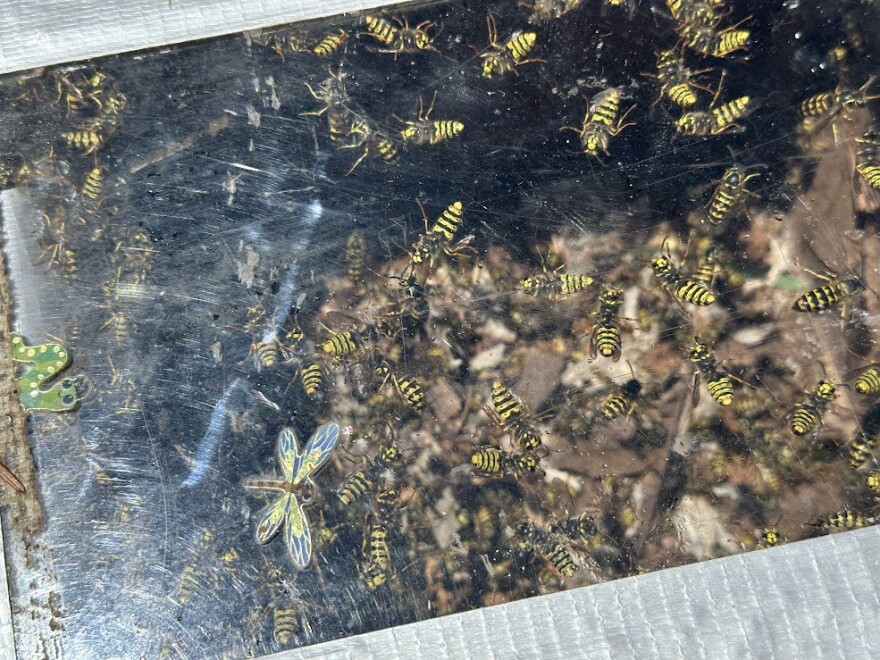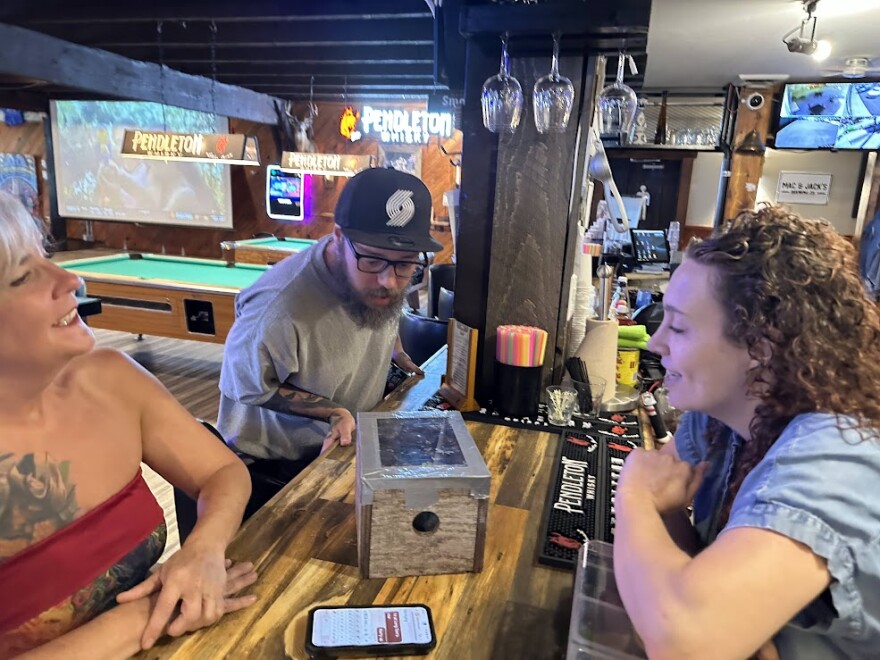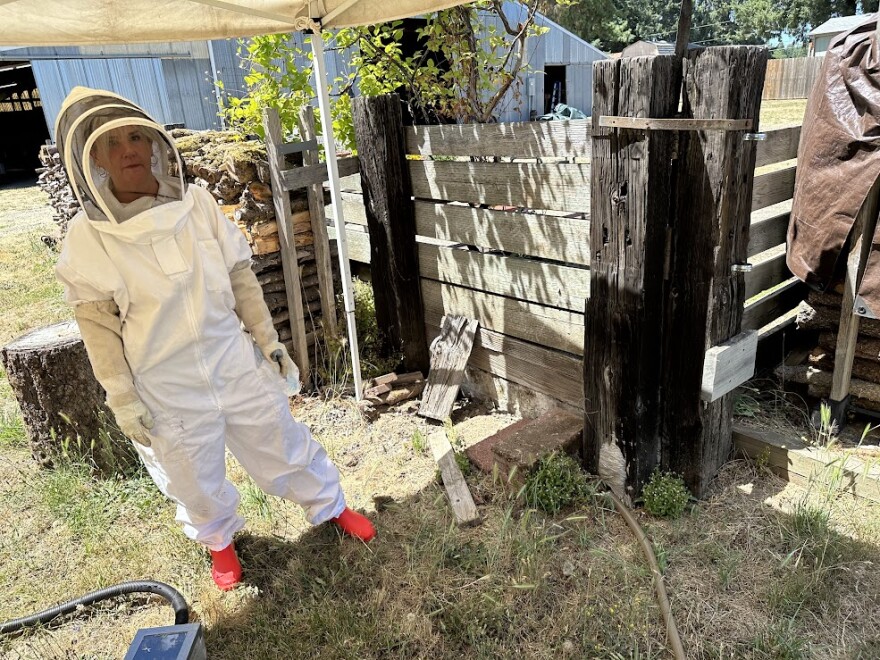Most of us avoid hornets and wasps, whose sting can be quite painful…and for some, even deadly. But there are actually some people who seek these venomous insects out, partly for the thrill but also for making some cash. It turns out there’s a niche pharmaceutical market for the bugs, that can help save lives.
A hornet harvest
It’s a searing hot day at Gnomewood Camp, a campground outside the town of Veneta. Nearby, Jeanne Howell zips up her protective suit and slides on her gloves. With a ground-vac roaring away nearby, she prepares to dismantle an old fencepost teeming with yellow jackets.
300 of them, Howell estimated.
“I’ll start banging on the post, agitating the nest," she said. "Guards will come out, some might make it past the hose. I’d like a layer of protection.”
Moments later, Howell is pulling off shards of rotten wood, exposing the intricate – and yes, horrifying – layers of the yellowjackets’ paper nest. While a few buzz around us, most get the hose.
Keeping a safe distance is Heather Kent, who runs the Gnomewood Camp. Howell’s removal of the yellowjackets isn’t just assuring, it’s good business. The Oregon Country Fair is practically next door.

“In just three days, we’ll have several hundred people come to the property," said Kent. "So the nests would not be good when they come.”
Best of all, Howell won’t charge Kent for removing the bugs. That’s because she’ll make some sweet change by selling them.
More on that later.
On another call, Howell arrives in the midnight hour to a home in the rural community of Marcola. She takes down two nests, including a tricky one that’s been built over a light fixture. With a few cautious tugs, the nest falls into a plastic bag, which she secures tightly and puts into her car.
This night, the interior buzzes with the sounds of 2,500 stinging insects from five nests.
The Marcola customer is grateful. He explains that he’s deathly allergic to hornet stings.
Which kind of brings this story full-circle.
Turning venom into medicine
Howell will freeze her catch, then separate the females from the pile as they’re the ones with the venom. It's a family tradition, as Howell learned everything about the biz from her father, Thomas. She began when she was only 8, her father letting her don a beekeeper's suit that was a few sizes too big for her.
Depending on the insect, Howell says she can make between $900 to $1,500 a pound. This is a seasonal job for her that runs from roughly March to October. She has several other gigs that pay the bills – the most she’s made in a year from hornet hunting is about $20,000.
She sells her insects to HollisterStier Allergy – the only pharmaceutical company in North America that extracts and processes insect venom into medicine.
“We can take upwards of 130,000 insects to produce one batch of drug substance, and that could take over 500 staff hours to dissect one at a time,” said Bob Erskine, HollisterStier's director of medical affairs.
In a given year, HollisterStier works with 20 to 60 vendors, who capture and sell them stinging venomous insects.
“It’s been on the market since April of 1979, when it was approved by the FDA. So this is purified venom,” said David Golden, an allergy expert with John Hopkins School of Medicine in Baltimore.
Golden says the market for venom immunotherapy isn’t well-known within the U.S., or as large as in Europe or other parts of the world. He said more non-allergist doctors need to learn about this life-saving form of medicine.
“So get more people to tell their doctor and get more doctors to actually know that something can be done, then there’d be a much bigger market for venom," he said. "It’s kind of a vicious cycle, unfortunately. It’s just a little scary that we have only one supplier. That’s all.”

Bar buzz
Back in Veneta, Jeanne Howell walks into a bar with a box of yellow jackets. That’s not a set-up for a joke. She does this every so often to unwind with a drink and give the locals something to marvel at.
Connor Lemke puts down his drink and leans in. “Do you get stung at all?” he asks.
“Never!” says Howell.
“Never?”
“Of course I do,” laughs Howell. “I got my thirteenth sting last night, right here. It’s a little red still.”
Stings aside, Howell says she loves the adrenaline rush of the job, and meeting people. That enthusiasm is being passed on to a third generation: Her teenage daughter, Ruby, has also started capturing nests on her own.
Copyright 2025, KLCC.



